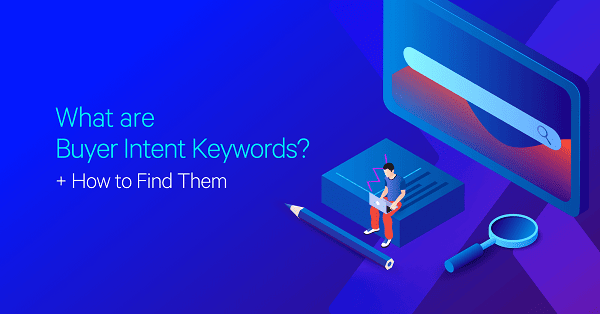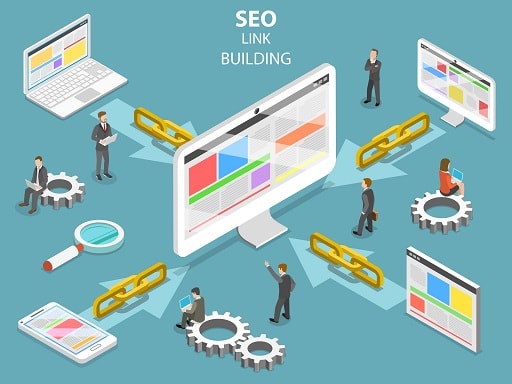We are all aware that successful SEO and paid search campaigns hinge on precise keyword targeting strategies. The greater visibility your website achieves in search results related to pertinent queries, the more visitors it will draw.
However, the significance of keyword optimization surpasses the mere augmentation of website traffic. It also assumes a pivotal role in maximizing your website’s conversion rates. By integrating buyer intent keywords into a comprehensive keyword strategy, you can construct a website that excels not only in generating traffic and leads but also in driving sales.
In this article, we will talk about various categories of buyer intent keywords and provide insights into recognizing terms that amplify conversions and sales for your enterprise.

What is Buyer Intent Keywords?
Buyer intent keywords can be defined as those terms or phrases that literally describe the intent of users to buy or to do something about products or services. These keywords indicate that the user is actively seeking to make a purchase or a decision and is not merely looking for information or casual browsing.
Buyer intent keywords are apt to have a user intent-focused on an action, be it buying, subscribing, or even requesting pricing. Buyer intent keywords tend to be further down the funnel and hence more targeted and specific compared to general informational keywords.
Buyer intent keywords have the potential to be relevant for several different forms of effective content and marketing strategies that result in a conversion or sale. Tailoring your content to the explicit needs and intentions of your would-be customers creates far greater possibilities for it to appeal to visitors who will execute your desired action on your website.
Buyer intent keywords are the search terms of people who contemplate making a purchase. These terms reveal variable intensities of buying intent, depending on what stage of the buyer’s journey the searcher is in.
To demonstrate, let’s assume that your company specializes in selling weed whackers. In the process of moving toward conversion, a search customer may use the following search terms:
- During the Awareness Stage (Problem-Aware): “How to landscape a front yard.”
- In the Consideration Stage Solution-Aware: “Best weed whackers 2023.”
- At the Decision Stage, Ready to Buy: “Buy Black & Decker electric weed whacker online.”
This illustration demonstrates that individuals closer to finalizing a purchase are inclined to use keywords that signal a heightened intent to make a transaction.
Benefits Of Using Buyer Intent Keywords
The evident advantage of achieving a high ranking for buyer intent keywords is that it positions you in front of potential customers who are contemplating a purchase decision. This effectively brings a higher number of visitors to your site who are ready to convert, leading to a subsequent enhancement of your financial outcomes.
Nevertheless, the benefits of securing a prominent position in Google’s search results extend beyond just elevating your website’s visibility. It also bolsters its perceived credibility. Search users naturally tend to associate higher-ranking websites with greater trustworthiness, resulting in an increased willingness to proceed with transactions.
Tailoring your focus towards buyer intent keywords that align with your specific niche additionally contributes to directing more qualified visitors to your website. While a substantial volume of traffic is never undesirable for a business site, the calibre of the traffic has a more significant impact on sales.
By veering away from investing resources in attracting visitors who lack genuine interest in your offerings, you can optimize your SEO Return on Investment (ROI) by catering to those actively in pursuit of the exact products and services you provide.
In simple terms, the more your website attains favourable rankings for pertinent buyer intent keywords, the more it will attract and convert novel, qualified customers. However, it’s crucial to understand that optimizing for buyer intent keywords doesn’t imply an exclusive targeting of users on the brink of a purchase.
The objective should encompass accommodating potential buyers at each stage of awareness, with the aim of guiding them progressively towards the ultimate conversion.
Types Of Buyer Intent Keywords
As previously highlighted, buyer keywords convey varying levels of purchase intent contingent upon an individual’s position within the buyer’s journey. Individuals at distinct stages of awareness generally share analogous objectives, challenges, and informational requirements.
The Importance of Bottom Of Funnel Keywords In SEO for Brands
Hence, it becomes possible to categorize buyer intent keywords into three distinct groups, each aligned with a particular phase of the buyer’s journey.
Awareness-Stage Keywords
Individuals querying these phrases are actively seeking a deeper comprehension of a challenge they’re grappling with or an objective they aim to fulfil. This is the juncture where they become acquainted with the fact that enterprises similar to yours can provide the requisite solution.
Keywords associated with the awareness stage usually comprise inquiries of an informational nature, featuring terms such as:
- “How to.”
- “What is.”
Consideration-Stage Keywords
Following their initial understanding of potential solutions to their predicaments, prospects progress to the consideration stage. Here, they embark on evaluating various purchasing alternatives.
Frequently, these prospects seek out resources such as product comparison compilations, comprehensive evaluations, endorsements, case analyses, and other pertinent materials aiding them in pinpointing the most fitting choice for their requirements.
Queries characteristic of the consideration stage frequently incorporate terms like:
- “[Product name] reviews.”
- “Best [product].”
- “[Brand name] vs. [competitor].”
Decision-Stage Keywords
Ultimately, prospects arrive at a juncture where they are poised to enact a decisive step. Having pinpointed the precise solution they intend to procure, they generally require a final push to propel them across the finish line.
As anticipated, keywords associated with the decision stage distinctly manifest elevated levels of intent to purchase.
In the realm of B2C audiences, these keywords often encompass expressions such as:
- “Buy now.”
- “Discount.”
- “Delivery times.”
For B2B clientele, who typically navigate a more protracted buying process, decision-stage keywords might encompass phrases like:
- “Demo.”
- “Terms and conditions.”
- “Payment plan.”
How To Identify Buyer Intent In Your Target Audience
Let’s now explore the process of discovering fitting buyer intent keywords tailored to your business. Once you have identified the specific keywords individuals employ while actively seeking to make a purchase within your niche, you can seamlessly integrate these terms into your SEO content strategy and paid advertising campaigns.
Keep in mind that this endeavour aims to engage search users who are progressing toward a purchase decision. While it’s undoubtedly important to target high-volume keywords to enhance visitor traffic to your site, concentrating on terms with varying degrees of purchase intent will notably enhance your capacity to transform these visitors into paying clientele.
Considering this, here are several factors to consider when compiling a roster of appropriate buyer intent keywords.
Take into account the Requirements of Your Ideal Customers
Commence by elaborating on the distinct issues your product or service can effectively address for prospective customers. Keep in mind that search users turn to Google to locate content and propositions that aid them in achieving their objectives.
Pose the following inquiries: What obstacles do your intended customers confront? What propels them forward? And what reservations do they voice while contemplating a purchase?
Once you’ve outlined the diverse predicaments your business can proficiently tackle for customers, encompassing both practical and emotional aspects, you’ll have a preliminary collection of subjects to serve as the foundation for constructing your list of focal keywords.
Conduct Research on Your Current Customer Pool
The subsequent phase involves comprehending the search inquiries that are already directing visitors to your website and leading to successful conversions. This assessment will aid in identifying the buyer intent categories you are effectively addressing and those that require enhancement.
Should you observe that certain keywords contribute disproportionately to your site’s sales, you might choose to elevate your content to truly maximize the potential for conversions.
Likewise, recognizing keywords that aren’t yielding favorable results presents opportunities for enhancement.
To ascertain the keywords that drive the highest site traffic and conversions, you can refer to your Google Search Console and Google Analytics accounts. These tools provide insights into the ongoing interaction users have with your site, unveiling the queries driving the most clicks, and the frequency of conversions once users land on various pages.
Furthermore, if you’re engaged in any paid search campaigns, delving into your Google Ads account can offer deeper insights into the categories of queries that yield optimal performance.
Examine Search Engine Activities and User Queries
An additional approach for unearthing buyer intent keywords involves delving into the queries that individuals search for within your specific niche.
While numerous keyword research tools can facilitate this process, you can initiate the process of comprehending the search demand within your domain by manually exploring relevant subjects through Google searches.
As you input a query into the search bar, take heed of the keywords that Google automatically suggests and make note of the “related searches” section positioned at the base of each results page.
This practice also serves as a valuable exercise for validating your assumptions concerning the degree of buyer intent tied to various keywords. Your anticipation might be that a specific query will yield outcomes of high intent, but the actual search engine results page (SERP) might be populated with results indicative of low intent (or vice versa).
Furthermore, you might stumble upon instances where certain queries generate a mixture of results catering to multiple intent categories. In such scenarios, it’s advisable to accord precedence to keywords that possess more evident and well-defined buyer intentions.
Use Different Sources to Gain Insights into Buyer Intent
In conclusion, as you seek keywords and subjects pertinent to your intended audience, it’s vital to draw inspiration from a variety of sources. It’s highly likely that your sales and customer service teams possess a wealth of customer insights that can seamlessly integrate into your keyword strategy.
Moreover, you can gain deeper insights into your target demographic’s challenges and motivations by exploring comments on pertinent YouTube videos, Amazon reviews, social media posts, Quora discussions, and similar platforms.
Ways to Enhance Page Speed for Increased Traffic and Conversions
Bear in mind that the objective is to grasp the difficulties customers encounter at different stages of their buyer’s journey, enabling you to create content and optimize your website to cater to their search requirements.
Discover and Enhance Buyer Intent Keywords
Let’s now explore a couple of methods to aid you in pinpointing and ranking the appropriate buyer intent keywords for your targeting efforts.
As previously mentioned, while manually reviewing search results for pertinent queries holds value, it isn’t an efficient approach for constructing an all-encompassing list of targeted keywords.
Would you like to read more about how to find buyer intent keywords related articles? If so, we invite you to take a look at our other tech topics before you leave!










